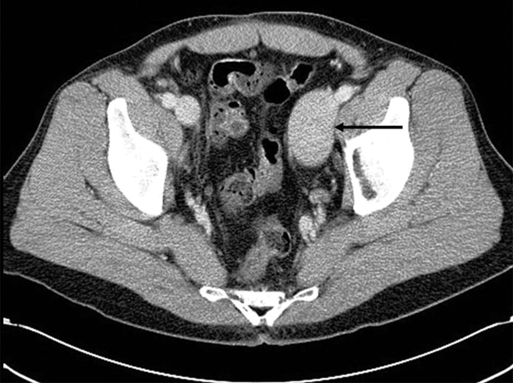Patients with popliteal aneurysms come to the hospital 44% of the time with symptoms suggestive of a pulmonary embolism (PE) followed by 36% having local symptoms in the popliteal space (Figure 1A). The presence of bilateral popliteal aneurysms is uncommon, and rupture has never been reported. Associated symptoms of venous insufficiency are often present. Duplex ultrasonography is the modality of choice for initial diagnosis, although most surgeons rely on venography for preoperative planning (Figure 1B). Ascending phlebography is rarely performed today owing to the sophistication of magnetic resonance venography and computed tomography venography. All popliteal venous aneurysms should be repaired given the high risk for PE. The risk of embolism does not correlate with the size of the aneurysm. Anticoagulation alone has been observed to be ineffective in preventing embolism from venous aneurysms in the popliteal space. The posterior approach to the popliteal fossa is the preferred surgical route for most cases (Figure 1C). Surgical options include resection of the aneurysm with end-to-end anastomosis or with an interposition bypass using nonreversed great saphenous vein, internal jugular vein, saphenous panel composite, or spiral vein (Figure 1D). Alternatively, aneurysmectomy with lateral venorraphy or patch angioplasty repair are options when the entire aneurysm is not completely removed. All surgical options appear to have similar results, although longterm patency rates are not available from the literature. Perioperative intravenous anticoagulation is recommended, followed by oral anticoagulation for 1 to 3 months postoperatively. Venous aneurysms of the upper extremities (brachial or axillary veins) are not associated with PE. They are most often discovered during imaging studies performed for other reasons, although occasionally they can create symptoms as a result of a mass effect (Figures 2 and 3).
Venous Aneurysms
Popliteal Venous Aneurysms

Venous Aneurysms of the Deep Veins of the Extremities
![]()
Stay updated, free articles. Join our Telegram channel

Full access? Get Clinical Tree


Thoracic Key
Fastest Thoracic Insight Engine

